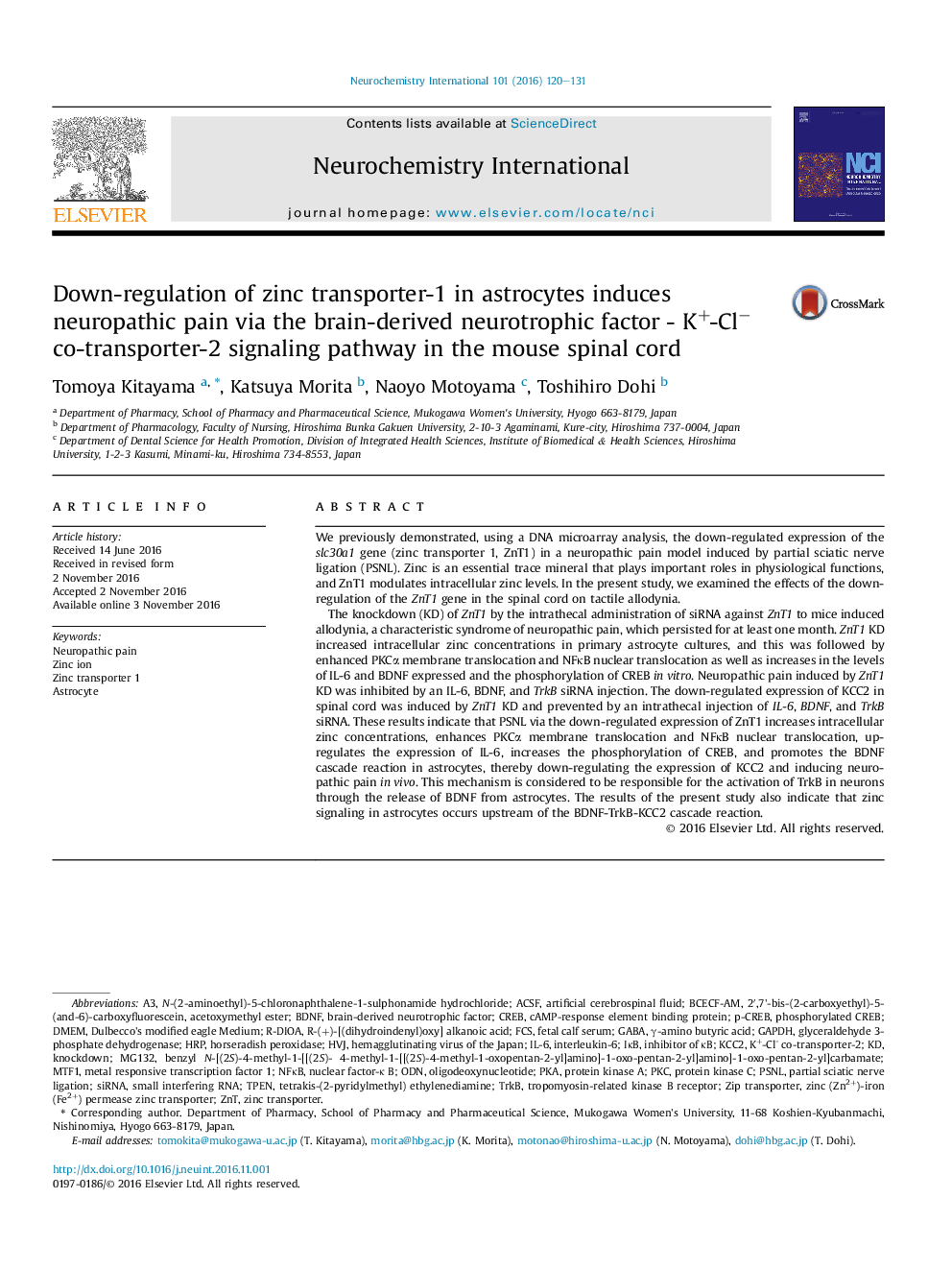| Article ID | Journal | Published Year | Pages | File Type |
|---|---|---|---|---|
| 5534775 | Neurochemistry International | 2016 | 12 Pages |
â¢PSNL down-regulated the expression of the ZnT1 protein in the spinal cord of mice.â¢Neuropathic pain was induced by the down-regulated expression of ZnT1.â¢Zinc signaling occurred upstream of the BDNF-TrkB-KCC2 cascade reaction.
We previously demonstrated, using a DNA microarray analysis, the down-regulated expression of the slc30a1 gene (zinc transporter 1, ZnT1) in a neuropathic pain model induced by partial sciatic nerve ligation (PSNL). Zinc is an essential trace mineral that plays important roles in physiological functions, and ZnT1 modulates intracellular zinc levels. In the present study, we examined the effects of the down-regulation of the ZnT1 gene in the spinal cord on tactile allodynia.The knockdown (KD) of ZnT1 by the intrathecal administration of siRNA against ZnT1 to mice induced allodynia, a characteristic syndrome of neuropathic pain, which persisted for at least one month. ZnT1 KD increased intracellular zinc concentrations in primary astrocyte cultures, and this was followed by enhanced PKCα membrane translocation and NFκB nuclear translocation as well as increases in the levels of IL-6 and BDNF expressed and the phosphorylation of CREB in vitro. Neuropathic pain induced by ZnT1 KD was inhibited by an IL-6, BDNF, and TrkB siRNA injection. The down-regulated expression of KCC2 in spinal cord was induced by ZnT1 KD and prevented by an intrathecal injection of IL-6, BDNF, and TrkB siRNA. These results indicate that PSNL via the down-regulated expression of ZnT1 increases intracellular zinc concentrations, enhances PKCα membrane translocation and NFκB nuclear translocation, up-regulates the expression of IL-6, increases the phosphorylation of CREB, and promotes the BDNF cascade reaction in astrocytes, thereby down-regulating the expression of KCC2 and inducing neuropathic pain in vivo. This mechanism is considered to be responsible for the activation of TrkB in neurons through the release of BDNF from astrocytes. The results of the present study also indicate that zinc signaling in astrocytes occurs upstream of the BDNF-TrkB-KCC2 cascade reaction.
